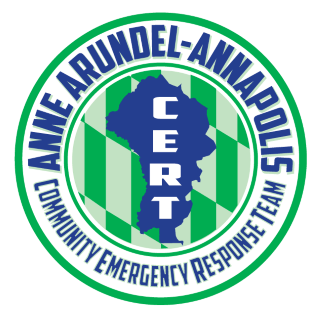Biological Incidents and the Role of CERT

Ms. Arlene G. Crow, Emergency Manager for Anne Arundel Community College, recently provided training to the Anne Arundel-Annapolis Community Emergency Response Team (AAACERT) on the operational members’ potential role in a biological incident.
Ms. Crow began the session by outlining the various forms and categories of bio-agents that might trigger a need for prophylactic dispensing to the general public. Bio-agents can occur in one of three forms: bacterial, virus, or toxin. Bacterial agents are distinguished by, among other things, their ability to replicate cells independently. Viruses, however, cannot reproduce outside the host body. A third type of agent, toxin, is a potent poison with organic origin.
Bio-agents are categorized according to their ease of transmission or dissemination; severity of mortality potential; need for preparedness; and ability to threaten national security or day-to-day social functioning. Category A, the highest-risk agents, include anthrax, botulism, plague, smallpox, tularemia, and certain viral hemorrhagic fevers. Category B agents include ricin, salmonella, certain encephalitis fevers, waterborne threats such as vibrio cholerae, and others. Category C agents are those with an emerging pathway, and which could be engineered for harm to the public. These include influenza, rabies, drug-resistant tuberculosis, SARS, and others. Emergency managers must be prepared to respond to a potential outbreak of any category agent.
The next phase of the training focused on the origins and symptoms of Category A bio-agents that cause the highest threat to the public: anthrax, tularemia, plague, smallpox, and viral hemorrhagic fevers. Ms. Crow noted that nearly all of these agents’ initial symptoms are flulike, highlighting the challenge for medical responders and diagnosticians in determining exactly with what malady a patient may present.
In all cases of a potential bio-threat, health departments, in conjunction with emergency managers, would act swiftly to establish points of dispensing (PODs) to distribute prophylactic medicine from the Strategic National Stockpile on a large scale that could protect the public. PODs can be set up indoor, outdoor, or as drive-thrus. Ms. Crow noted the efficacy of drive-thru PODs due to their ease of use for the public, the police, and the medical community. She reminded CERT members of the need for logistical necessities for all who participate, either as customers or workers – i.e., a large space, full gas tanks, available bathroom facilities, food for workers, etc.
CERT members have an important role in the smooth functioning of a POD. Among the functions CERT teamers can carry out during a POD are traffic control/lane controllers; set-up and tear-down; administrative support; communications/runners; data collection; resupply; greeters; logistics; and, in some cases, even dispensing or assisting with the dispensing of medication.
For more information on bioterrorism and response, visit the Centers for Disease control (CDC’s) information page.
Biological Incidents and the Role of CERT Read More »

